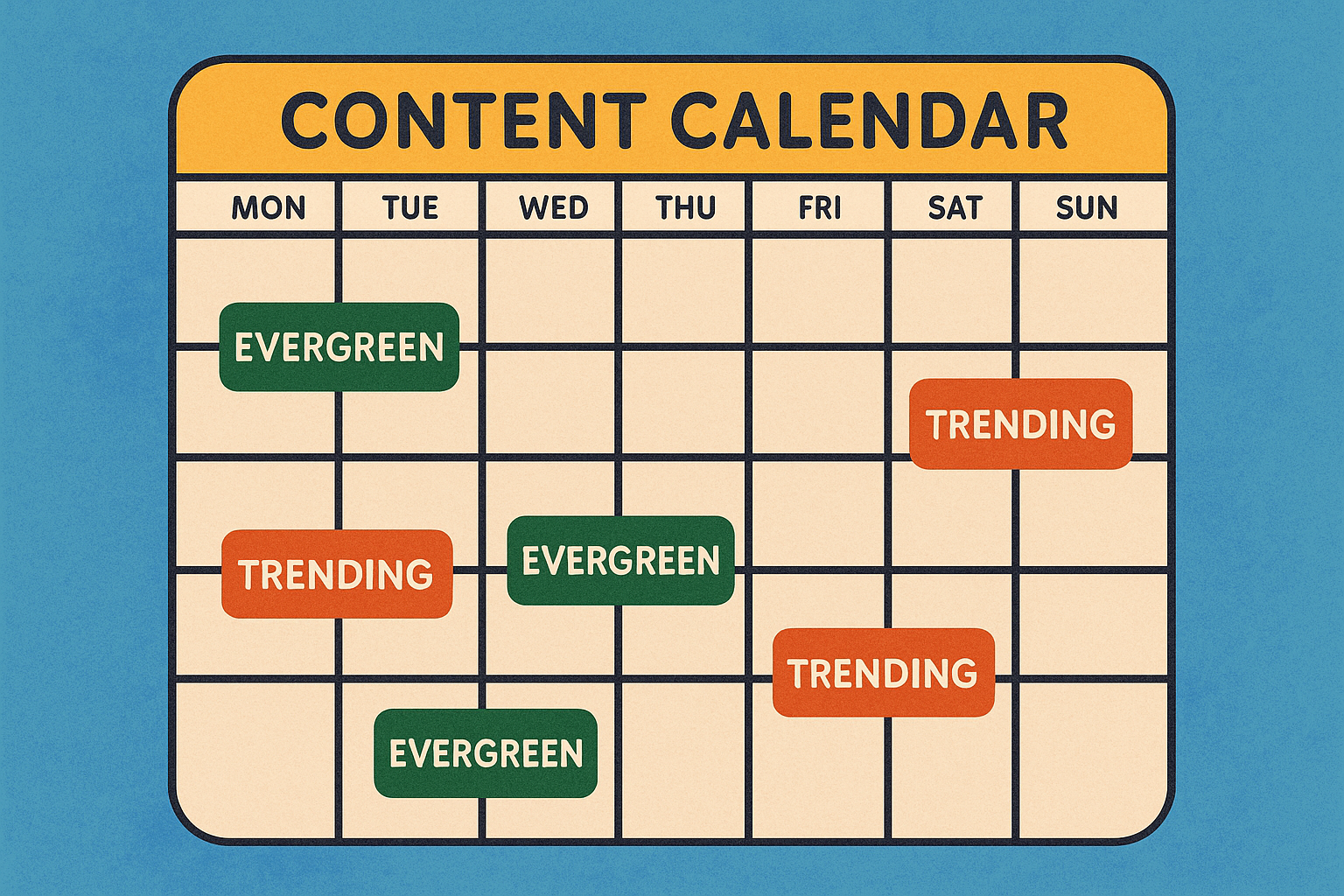If you’ve ever found yourself wondering whether to prioritize timeless how-tos or hop on the latest social media trend, you’re not alone. This is one of the most common dilemmas marketers face: should your content be evergreen or trending?
The truth is, you don’t have to choose just one. In fact, the most effective content strategies find a healthy balance between the two. This blog post will walk you through the differences, benefits, and how to actually mix them in a way that keeps your audience engaged and your brand growing.
Evergreen Content: The Long Game
Evergreen content refers to pieces that remain relevant and useful over time. These are the blog posts, videos, or social media tips that people will still be searching for months — or even years — from now. For example, a guide on how to use hashtags effectively or a breakdown of email marketing basics are not tied to any current event or trend. They provide steady value and don’t lose their usefulness quickly.
The biggest advantage of evergreen content is its longevity. It often ranks well in search engines, continues to drive traffic long after it’s published, and can be repurposed into other formats — like newsletters, carousel posts, or reels — without losing impact. Evergreen content also creates a reliable foundation for your content calendar. On days when you’re short on ideas or bandwidth, evergreen pieces fill the gaps without feeling stale.

Trending Content: Riding the Wave
Trending content, on the other hand, is based on what’s happening right now. Whether it’s a new Instagram feature, a meme taking over TikTok, or a news headline dominating conversations, trending posts capture attention by being timely.
The benefit of jumping on trends is the potential for quick engagement and wide reach. People are more likely to share content that feels current or taps into something they’re already thinking about. It also positions your brand as relevant and plugged into the cultural moment — which can help build trust and boost visibility.
But trending content also comes with a catch: it has a short shelf life. What’s hot today might be old news tomorrow. That means it’s harder to reuse and rarely performs well in search results after the initial buzz fades.
The Problem with Going All-In on One Side
While both types of content have clear advantages, leaning too heavily in one direction can backfire.
If your strategy is only evergreen, your content might feel too safe or generic. It will continue performing in the background, but you could miss opportunities to connect with audiences in real time or show your brand’s personality.
On the flip side, if your entire feed is made up of trending content, you’ll constantly be chasing the next viral moment. It can be exhausting to sustain and leaves your calendar vulnerable to lulls when nothing notable is happening.
What’s the Ideal Mix?
There’s no universal ratio that works for everyone, but a solid starting point is to aim for about :
🧱 60% Evergreen Content
🎯 30% Trending Content
✨ 10% Personal or Experimental Content
This blend gives you a stable content foundation, keeps your posts relevant and engaging, and leaves just enough room to test creative ideas or show a more human side of your brand.
Of course, this ratio should evolve with your goals. If you're in a growth phase and want to attract a lot of new followers, you might lean more into trending content. If you're building a content library for long-term SEO, evergreen should take center stage.

Making the Mix Work in Real Life
To implement this in your content calendar, start by building out your evergreen posts. These can be created and scheduled in advance, giving you a consistent flow of content no matter what’s happening in the world.
Next, leave some space open each week or month for trending topics. This allows you to act quickly when something relevant comes up. You don’t need to respond to every trend — just the ones that make sense for your brand and audience.
Keep your eyes open for opportunities to combine the two. For instance, you could take a popular trend and use it to introduce an evergreen idea, or update a timeless blog post with new data tied to recent news.
Most importantly, track your performance. Look at which types of content drive the most traffic, engagement, or conversions. Your audience’s behavior will tell you if you need to shift the balance.
Conclusion
The debate between evergreen and trending content doesn’t have to be a competition. Each serves a purpose — and together, they form a powerful duo. Evergreen content builds a strong, reliable backbone for your marketing, while trending content keeps you visible and connected in the moment.
When you find the right mix, your content strategy becomes both sustainable and exciting. You’ll attract the right people, keep them coming back, and create a content calendar that works — even on the busiest days.



